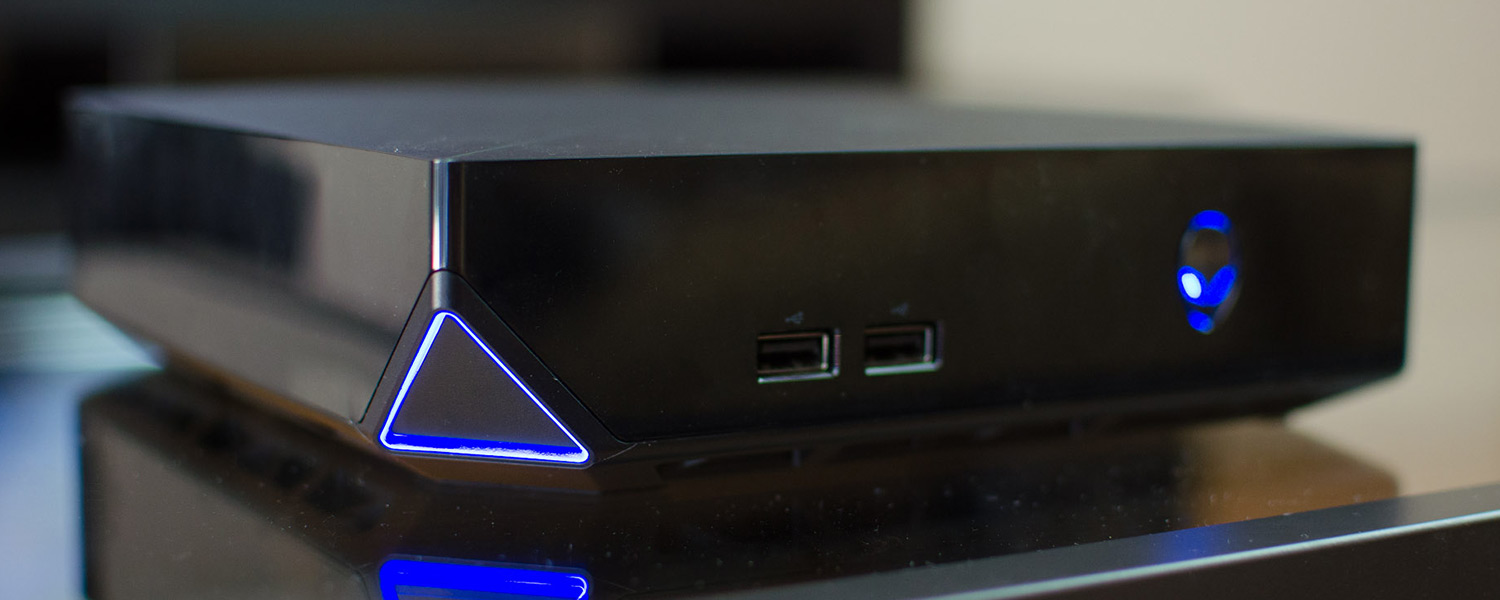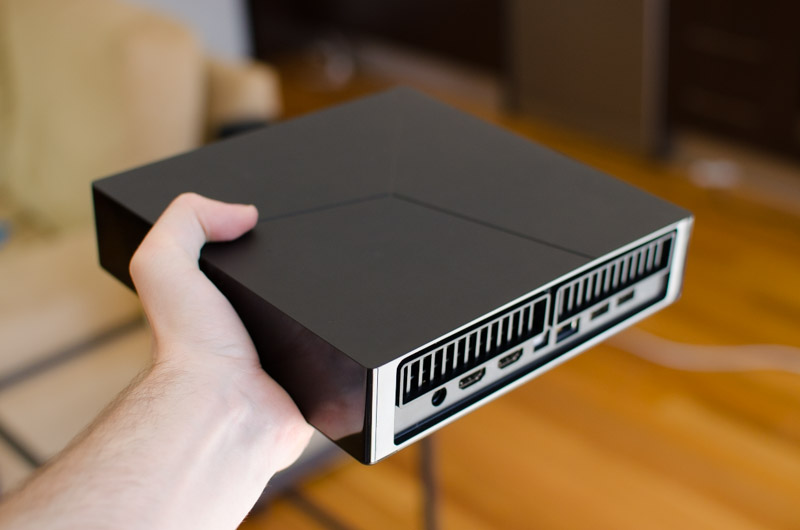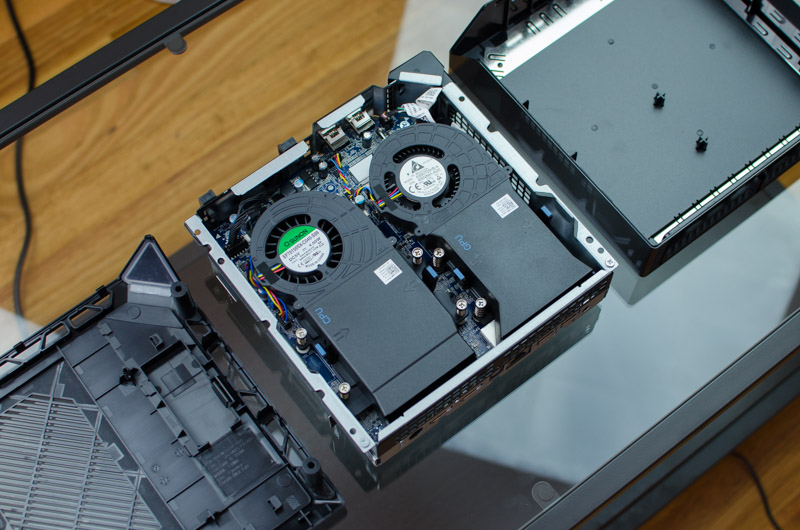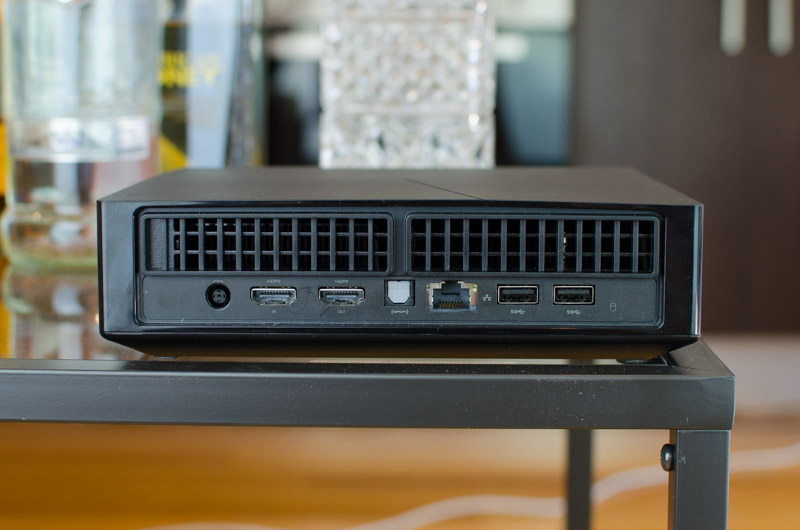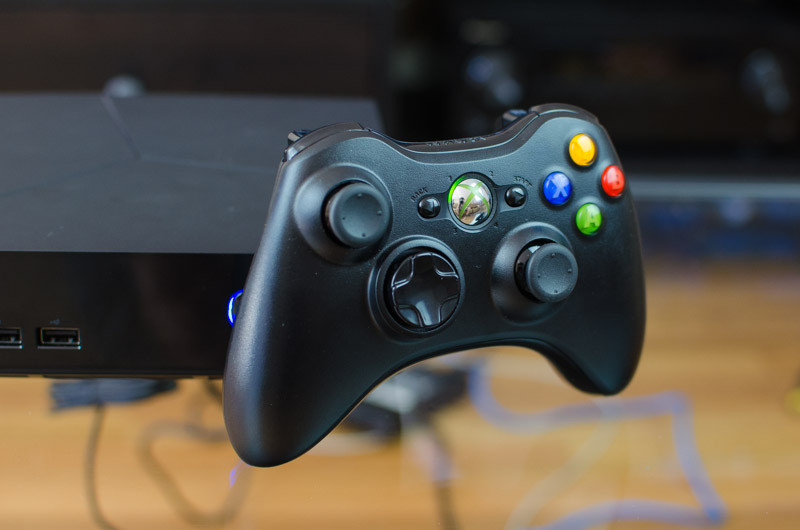Known as Steam Machines, Valve told us over a year ago this was going to be their brand new hardware platform, set to arrive sometime in 2014 to rival the new generation game consoles. But the year has come and gone, and due to several delays on Valve's end, we don't expect to see the first Steam Machines until sometime in 2015.
That hasn't stopped a number of companies from launching their own console-like PC-based systems running Steam in 2014. They're not formally called Steam Machines and they don't run SteamOS, but they are small form factor PCs designed for living room gaming. The most promising of these systems was recently launched, meet the Alienware Alpha.
The Alpha is a compact living room gaming PC that's compelling for a number of reasons. At $550 for the entry-level model, the system is priced competitively against the PlayStation 4 and Xbox One. Both consoles do cost $150 less, but the Alpha is a more powerful console that suits the gamer wanting better graphics, frame rates, and resolutions on a more consistent basis. On top of this, you get the advantages of gaming on a PC, such as a massive game library, cheaper games and the excellent modding community.
Despite its relatively tiny footprint, the Alienware Alpha doesn't compromise on performance. On the entry-level model (which we've reviewed) you get an Intel Core i3-4310T CPU, which is a dual-core 35W Haswell-based part clocked at 2.9 GHz with 3 MB of L3 cache. This is paired with 4 GB of DDR3L laptop memory clocked at 1600 MHz, and a 500 GB 2.5" SATA drive. Connectivity includes Intel's Dual Band Wireless-AC 3160 1x1 chip and Bluetooth 4.0, alongside Ethernet and USB 3.0.
The GPU is an interesting story. Alienware says the Nvidia-based core is "custom-built" for the Alpha, but a quick inspection of the device's hardware reveals it to be a Maxwell variant of the GeForce GTX 860M. Specifically we're looking at a GM107 GPU core with 640 CUDA cores, a 1029 MHz base clock, and 2 GB of dedicated GDDR5 memory clocked at 5000 MHz on a 128-bit bus. These specs place the performance just under the desktop-class Nvidia GeForce GTX 750 Ti.
It's hard to judge exactly how the internal hardware of the Alpha compares to the consoles, so I'll let the performance figures in this review speak for themselves.
The unit itself is very compact, significantly smaller than the PlayStation 4 and most other consoles released over the past 10 years. It's most similar in size to the Nintendo Wii U, though it's squarer in design (a 200x200mm square) and much more powerful. Alienware has managed to cram a full PC with decent specifications into a compact case with an efficient cooling solution, which is pretty impressive.
While the top edge of the Alpha is flat, the bottom edge is angled to improve cooling. Intake vents are found around the bottom edges of the unit, with blower-style fans funnelling this air out two sizable vents at the back. Internally there are two blowers, one for the GPU and one for the CPU, each with small heatsinks underneath. You couldn't put full-power desktop parts into this machine, but there's adequate cooling for what's included.
Looking at the internal layout you'll find two laptop DIMM slots, only one of which is occupied if you purchase the 4 GB model. There's also a small Wi-Fi chip north of the GPU, and a small heatsink for the motherboard's chipset. Underneath the motherboard and in a relatively easy place to access is the single 2.5" drive bay.
The Alpha's external shell is made mostly of plastic: glossy on the sides and matte, with a Y-shaped pattern, on the front. It's a pretty slick system, mostly due to its size, that will fit in well with most living room entertainment units. The front panel features a small Alienware head that doubles as a power button, as well as an angular cutout. Both sections are illuminated by RGB LEDs which can be customized in software, adding decent highlights to the design.
Port-wise you get two USB 2.0 ports on the front, and two USB 3.0 on the back. The back panel also features Ethernet, HDMI in and out, and a Toslink optical audio out port. Power is provided through a circular power port, which connects to a sizable power brick rated at 130.65 watts. This gives the Alpha a maximum power rating on par with the current generation of consoles.
On the bottom of the Alienware Alpha is a removable section of plastic, underneath which you'll find a square section and a single USB port. Alienware tells me this area is meant for the Steam Controller's wireless adapter: when the controller is released, you'll be able to slot the adapter in here for a seamless experience. It's nice to see designers have made the console forward-compatible in this way.
Alienware has bundled in a wireless Xbox 360 controller. The Xbox 360 controller is one of the most comfortable to use, so I like its inclusion over something unfamiliar. It works well with many games available on PC, however its integration into the Alpha is inelegant. Instead of having an adapter that slots into the bottom of the console, the chunky and proprietary wireless adapter needs to be plugged in to a rear USB port, and then hidden behind the console.
Not only is this solution less elegant, but it also reduces the amount of free USB 3.0 ports available to use, unless you plug the adapter into one of the front USB 2.0 ports. The good news is that the wireless adapter supports up to four controllers at once, just like the Xbox 360, meaning you can easily add in some extra controller for split-screen multiplayer or co-op.
